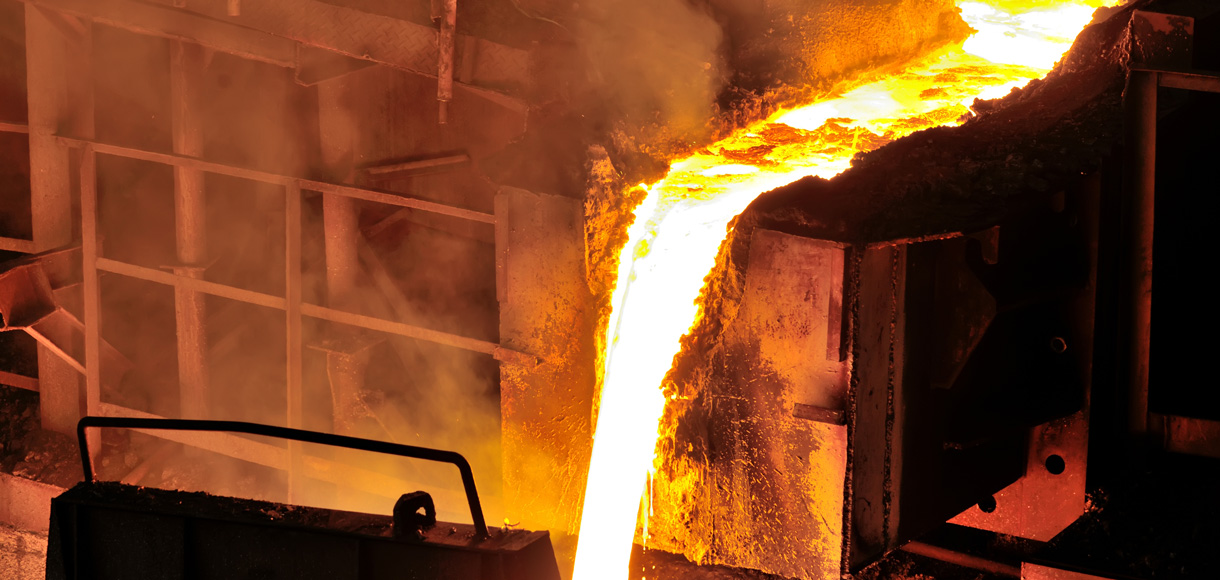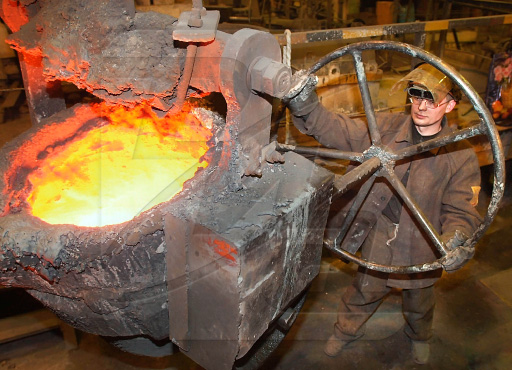Discover the Innovations and Techniques worldwide of Casting Foundry
The Casting Foundry industry is undergoing substantial makeover. Advanced materials and cutting-edge methods are redefining conventional techniques. Automation and robotics are improving operations, while lasting techniques are ending up being important. New mold and mildew styles and additive production are offering unprecedented opportunities. Quality assurance measures are additionally evolving, ensuring dependability in production. As these trends remain to shape the future of spreading, one must think about exactly how they will impact the industry overall.
The Duty of Advanced Materials in Spreading
Advanced products play a vital duty in enhancing the performance and top quality of casting procedures. They add to enhanced thermal stability, minimized contraction, and boosted resilience of actors products. Advancements such as sophisticated ceramics and composite products give higher resistance to mechanical and thermal tensions, allowing the production of detailed styles with superior surface coatings. These products likewise help with better mold and core manufacturing, causing reduced issues and boosted dimensional precision.
The use of alloys with tailored buildings permits for maximized performance in details applications, such as aerospace and automobile markets. As foundries embrace innovative products, they can attain higher power effectiveness and lower waste generation, aligning with sustainability goals. The assimilation of these materials not only enhances manufacturing yet additionally boosts the overall competition of Foundry operations in a rapidly advancing market, marking a pivotal change in typical Casting methods.
Automation and Robotics in Foundry Procedures
Automation and robotics are transforming Foundry procedures by boosting performance and accuracy. These technologies streamline molding processes, minimizing labor prices and decreasing human error. Therefore, manufacturers are increasingly embracing automated systems to improve production capabilities and meet increasing need.
Advantages of Automation
The integration of automation and robotics right into Foundry operations has actually changed traditional production practices, producing substantial advantages. Enhanced efficiency ranks among the primary advantages, as automated systems operate continuously, minimizing cycle times and enhancing outcome. Automation improves precision and uniformity in casting procedures, reducing flaws and guaranteeing higher top quality items. (Casting Foundry)
Cost cost savings also arise from decreased labor expenses and reduced material waste, enabling more effective resource usage. Security is an additional crucial benefit; automation minimizes the danger of human injury by taking care of hazardous tasks. In addition, real-time surveillance capabilities make it possible for better data collection and evaluation, facilitating informed decision-making. Generally, the fostering of automation and robotics substantially enhances functional performance, leading to enhanced competitiveness in the Foundry market.
Robotics in Molding Procedures
Just how can robotics enhance molding processes in shops? Robotics substantially boosts efficiency and precision in molding operations. Automated systems can deal with recurring tasks, such as putting patterns and pouring molten steel, reducing the risk of human error and making sure consistent high quality. Furthermore, robot arms geared up with innovative sensing units help with elaborate mold and mildew layouts, enabling complicated geometries that typical approaches battle to accomplish.
Robotics can run in harmful atmospheres, reducing the need for human intervention in unsafe jobs. This not just improves worker safety but additionally maximizes production rates. By incorporating robotics into molding processes, foundries can attain higher throughput, minimized cycle times, and reduced operational prices, placing themselves competitively in a progressing sector landscape.
Lasting Practices in Casting Foundries
As the need for eco accountable production boosts, casting foundries are adopting sustainable practices to lessen their eco-friendly footprint. Numerous shops are executing recycling programs for metal scrap, lowering waste and conserving sources. By reusing products, they can notably reduce the raw product consumption that adds to ecological deterioration.
Furthermore, energy-efficient procedures are being incorporated right into operations. Foundries are buying renewable power resources, such as solar or wind power, to lower reliance on fossil fuels. This change not just lowers greenhouse gas emissions yet likewise boosts price financial savings with time.

Developments in Mold And Mildew Design and Fabrication
Recent innovations in 3D printing innovation are transforming mold layout and manufacture in the Casting Foundry field. Furthermore, the introduction of sustainable products is enhancing the environmental impact of manufacturing processes. Accuracy mold and mildew engineering strategies additionally add to enhanced effectiveness and accuracy in the production of facility components.
3D Printing Modern Technology Developments
Conventional mold design and manufacture methods have offered the Foundry industry for decades, developments in 3D printing technology are changing these processes. By allowing the development of very complicated geometries, 3D printing permits more intricate designs that were cost-prohibitive or formerly difficult. This innovation decreases lead times substantially, as models and molds can be produced in an issue of hours as opposed to weeks (Casting Foundry). In addition, 3D printing helps with quick iteration, enabling designers to check and change designs quickly based on responses. The capacity to produce mold and mildews making use of numerous materials enhances versatility and makes it possible for customized solutions for specific Casting applications. 3D printing technology is improving the landscape of mold and mildew style and construction in the Casting Foundry market.
Lasting Material Innovations
The change toward sustainable methods in the Casting Foundry sector is acquiring momentum, with innovations in product choice playing a critical duty. Factories are progressively adopting green products, such as bio-based resins and recycled steels, to lessen ecological influence. These sustainable products not only minimize waste however additionally enhance the overall effectiveness of the Casting process. Developments in mold layout, such as using 3D printing technology for producing mold and mildews with much less material, additional add to sustainability efforts. Additionally, advancements in covering technologies permit lowered exhausts throughout casting operations. By prioritizing lasting product next developments, the Casting Foundry industry is moving in the direction of an extra liable future, aligning production exercise with ecological stewardship and source preservation.
Accuracy Mold And Mildew Design Techniques
As advancements in innovation proceed to improve the Casting Foundry industry, accuracy mold engineering techniques are emerging as crucial elements in enhancing manufacturing quality and effectiveness. These cutting-edge approaches leverage computer-aided layout (CAD) and computer system numerical control (CNC) machining to develop molds with outstanding accuracy. Methods such as additive production permit complex geometries that standard methods can not attain, substantially reducing preparations and material waste. Additionally, the combination of simulation software program assists in forecasting mold actions throughout spreading, enabling the optimization of layouts before physical production. This positive strategy not just boosts the general return however likewise assures that mold and mildews can be tailored to meet details application requirements, leading the way for even more sophisticated and flexible Casting options.
Additive Manufacturing: A Video Game Changer for Casting
While traditional Casting approaches have long been the foundation of manufacturing, additive manufacturing is quickly transforming the landscape of casting shops. This innovative technique, typically referred to as 3D printing, enables the development of complex geometries that were previously unattainable with traditional techniques. By utilizing digital layouts, shops can produce mold and mildews and cores with precision and speed, considerably decreasing lead times and product waste.
Additive production likewise facilitates the production of personalized components, allowing suppliers to respond promptly to certain customer requirements, consequently improving competition. Additionally, the combination of additive Read Full Report procedures into Foundry procedures can streamline process, boosting general performance. As the market accepts these advancements, it is positioned to redefine the future of casting, providing brand-new chances for imagination and flexibility. Consequently, additive manufacturing stands as an essential development, reshaping just how foundries come close to design and manufacturing in a swiftly developing market.
Quality Assurance Techniques in Modern Foundries
Quality control methods in modern-day shops are crucial for guaranteeing that cast products meet rigid industry criteria and customer specifications. These methods include a range of approaches, including analytical procedure control (copyright), which checks production processes to remove and identify variability. Non-destructive testing (NDT) approaches, such as ultrasonic screening and X-ray evaluation, are utilized to find inner problems without harming the item. In addition, the execution of automatic examination systems boosts both precision and performance, permitting for real-time top quality analyses. Product traceability is one more essential component, ensuring that each set of basic materials can be tracked throughout the manufacturing procedure. In addition, modern-day factories significantly use computer-aided design (CAD) and simulation software to predict potential issues prior to casting, assisting in positive quality monitoring. By incorporating these sophisticated quality control methods, factories can significantly lower waste, enhance item dependability, and maintain affordable advantage in the market.
The Future of Casting: Trends and Forecasts

The trend towards sustainable practices is getting momentum, with factories significantly taking on eco-friendly products and procedures. This shift not just addresses environmental worries yet also straightens with customer demand for greener products.
In addition, the surge of additive production is anticipated to transform typical Casting approaches, enabling for much more complex layouts and reduced product waste.
As these patterns form, the Casting market is most likely to experience significant changes in manufacturing strategies, market needs, and labor force requirements. Business that embrace these changes will certainly be well-positioned to grow in a progressively competitive landscape.
Frequently Asked Concerns
What Are the Common Sorts Of Casting Processes Made Use Of Today?
The usual sorts of casting processes used today include sand casting, financial investment casting, die casting, and centrifugal casting. Each technique differs in product, application, and intricacy, satisfying varied industrial and manufacturing needs.
Exactly How Does Casting Contrast to Various Other Production Methods?
Casting, compared to various other making techniques, provides advantages like complex shape development and material efficiency. It might involve longer lead times and greater preliminary costs, making it much less ideal for rapid manufacturing contrasted to approaches like machining.
What Industries Primarily Count On Casting Foundries?
Industries such as automotive, building, aerospace, and equipment heavily count on casting shops. These sectors use casting for creating complex steel parts, guaranteeing durability and precision in their products, which are essential for functional effectiveness.
What Are the Regular Precaution in Casting Foundries?
Typical security steps in casting factories include personal safety devices, proper ventilation, normal tools upkeep, safety and security training, and emergency situation reaction procedures. These practices aid decrease risks related to high temperatures, toxic materials, and heavy machinery operations.
How Can I Start an Occupation in Casting Foundry Procedures?
To start a career in casting Foundry operations, one need to go after relevant education, look for instructions, gain hands-on experience, and familiarize themselves with safety methods and machinery used in the Foundry market to boost employability.
Recent improvements in 3D printing innovation are revolutionizing mold design and construction in the Casting Foundry field. The shift toward sustainable practices in the Casting Foundry sector is acquiring momentum, with advancements in material option playing a critical function. As developments in technology proceed to improve the Casting Foundry sector, accuracy mold engineering methods are arising as essential components in boosting manufacturing quality and performance. While typical Casting approaches have actually long been the backbone of manufacturing, additive production is swiftly changing the landscape of casting shops. Modern-day factories progressively use computer-aided style (CAD) and simulation software application to anticipate potential defects before spreading, promoting positive quality administration.